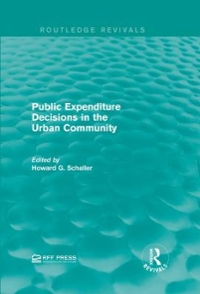Please ONLY ANSWER IF YOU KNOW AND EXPLAIN IN DETAILS, OTHERWISE I FLAG IT TO THE MODERATOR AND DOWNVOTE AND I WILL SEND AN EMAIL TO CUSTOMER SERVICE, thanks
Please answer all the questions; please don't skip any subparts. May you explain all the formulas needed where appropriable and definitely theories behind them first. Feel free to make any reference links that may potentially help me to study. If you don't know any part or subpart, may you not take the question. Please provide an excellent formatted answer, and I strongly prefer typing rather than handwritten. If you provide a bad answer in any form that is badly formatted, or wrong, etc., I am afraid I will need to downvote you and possibly flag it. The answer needs to be very logical, easy to understand , clear and cover all the necessary theories , formulas where appropriable and all the parts and easy to read(prefer typing, so try not to handwrite). You are able to show agood job. Thank you.
for example, explain what each term means first and then step by step towards the answer, if using formula, explain what each symbol means and how to use formula, etc make it as clear , as easy, as understandable to guide to your answer, step by step, thanks
Please if the answer Is based on your student note, or anything similar, please post the screenshots of it , thanks !!!
1)The answer is shown in part a) which I am referring to the first photo, my question is why cant I apply the same method in partb) as p/(1-p) =1/4 and p=0.20? also does p means the event of A that being favoured?
Please explain all the parts, especiallyexplain the theory about favor in the odds, and also the second question about hwo those answers are obtained? tHE ANSWERS AR EPROVIDED BUT I FAILED TO UNDERSTAND THEM so explainthem rather than copying the answer again, thanks!
In economics, we normally talk about probabilities, but betting markets normally work in terms of odds. It is straightforward to convert between odds and probabilities. In betting markets, "betting odds" indicate the payment that will be awarded in the event of a successful bet. Take the example of betting on Brexit: in mid-May 2016, the bookmakers Ladbrokes, Coral, and William Hill all had the same published betting odds for the UK's referendum on whether or not to withdraw from the EU which was due to be held the following month. a. The betting odds for 'Leave' was posted as 11 : 4 (published as 11/4), meaning that a $4 bet on Leave would yield f11 in winnings (and the original $4 would be returned) in the event that the UK votes to leave. If the UK votes to stay, the $4 is lost and there are no winnings. What was the implied probability of leaving the EU from these betting odds? ANSWER: The implied probability of staying can be found by solving the following the following odds ratio for p: P 11 1 - 4 11 11+4 = 0.7333, and the implied probability of leaving 1 - 0.733 = 0.2667. b. The bookmakers posted betting odds for 'Stay' of 1 : 4. Convert these betting odds to an implied probability of leaving the EU. ANSWER: The implied probability of staying was * = 0.80, and the implied probability of leaving was 0.20.c. Why were your answers to (a) and (b) incompatible? What probability would you use if you wanted to represent the bookmakers' beliefs about the likelihood of Brexit? What betting odds would reflect this probability? ANSWER: The answers were incompatible because the bookmakers have a profit margin, so they don't buy and sell bets at the same price. Assuming the bookmakers have the same expected profits on Leave and Stay, the best way to get an implied probability is just to average the probabilities. So the real implied probability of a Leave vote was 0.5 x (0.20 + 0.2667) = 0.2333 and the implied probability of a stay vote was 0. 7667. The betting odds corresponding to 0.7667 (leave) is 23 : 7. To find this, note that: IN 230 23 23 - 23 : 7 100 300 30 23 + 7 The betting odds corresponding to 0.2333 (stay) is 7: 23. Note that this is not the only way of calculating the 'true' probability as suggested by the betting odds. For further reading, refer to Clarke, Stephen, Stephanie Kovalchik, and Martin Ingram. "Adjusting bookmaker's odds to allow for overround. " American Journal of Sports Science 5.6 (2017): 45-49. You can find this on Google Scholar.In Spring 2016, the bookmaker Paddy Power was taking bets on "Euro Currency To Exist In 2020," with betting odds for 'Yes' of 1 : 8 and for 'No' of 9 : 2. a. What are the probabilities of Yes and No implied by the Yes betting odds? ANSWER: Yes: 8 = 0.8889 No: -= 0.1111 1+8 1+8 b. What are the probabilities of Yes and No implied by the No betting odds? ANSWER: Yes: 9 9+2 - = 0.8182 No: 2 = 0.1818 9+2 c. What probabilities would you use if you wanted to represent Paddy Power's beliefs about the likelihood of a euro breakup? ANSWER: As in the last question, one possible approach is to to average the implied probabilities: Probability: Yes: (8/9)+(9/11) = 0.8535 No: (1/9)+(2/11) = 0.1465 2 2









